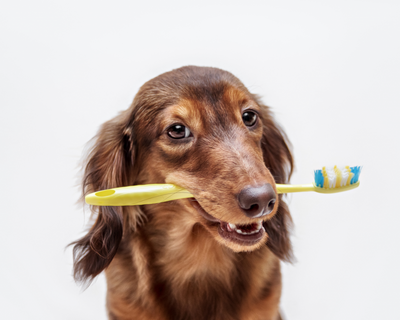When we are thinking about owning a dog, one of the images that many people have is a leisurely stroll on a sunny day. We probably envisage stopping for a chat with a friend on the way, the dog strolling obediently beside us. The reality for many people is that their dog drags them along, often pulling uncontrollably and this can become worse when they see someone or another dog. The result of this experience is that we are less inclined to walk the dog! After a week or so, we then try again and the problem seems worse than before because now the dog has pent up energy and is more excited about going. Eventually many people just give and this can lead to poor health effects for you and your pet. The good news is that with just a few changes you’ll get control of your dog and everyone can enjoy their regular walk.
Tip 1 - Position, position, position
In real estate they say it’s all about position and that's definitely the case when you walk a dog. The dog should walk beside you with a short lead length, especially for the first 5-10 minutes of the walk. This allows you to keep better control and engages the muscles in your biceps rather than your shoulders to control the dog. It is important that this position is consistent. If you want to let the dog move ahead, it's best to stop walking and allow this on retractable lead. Then once you start moving return the dog to the position beside you.
Tip 2 - Use the correct equipment
Dog collars are great for dog tags (in fact a collar and tag is the law in many states) . What dog collars aren’t great for is walking a dog. Aside from attaching you to the dog, they offer little if any control and they can be uncomfortable for the dog if they are excited or pull.
Depending on the breed and size of the dog, it's best to use either a walking harness or head leader. Walking harnesses differ from ordinary harnesses in that they prevent pulling by becoming tighter when the dog pulls and then hang in a relaxed position when the dog isn’t pulling. These are effective even on larger breeds.
Head leads are useful for dogs that don’t like to wear a harness or who are sensitive under the front leads. These lead the dog from the head much in the same way that halter leads a horse from the head. This is the weakest part of the dog and provides control on large breeds. These are best suited to breeds with long snouts.
Tip 3 - Pick up the pace!
Have you noticed that when you take a dog for walk, they are the most excited and pull the most during the first few minutes? After this they ease off a little. This is due to what we refer to as the “seeking mechanism” of the dog’s brain being turned on. Walking stimulates all of the dogs senses and they go into overdrive and try to take in as much as possible. Instead of fighting this, pick up your pace for the first 5 minutes of the walk. It will get your heart rate up and help the dog calm down faster and make the walk more enjoyable for everyone.
Finally be consistent, the more you walk and use these techniques, the better your dog will be. Set yourself a challenge to walk your dog every day for a month and I know you’ll see an improvement.
For further information, call in & see us in the store, or email us: admin@weknowpets.com.au
4/72-76 Station St Bowral NSW 2576
PH: 024862 1175
© weknowpets 2018





